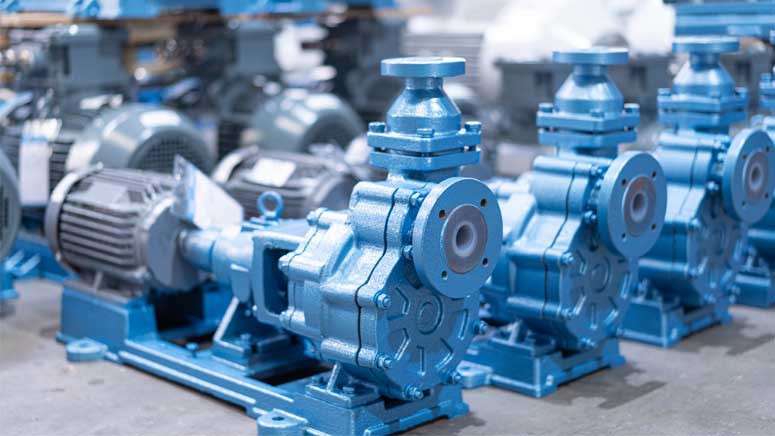Industrial pumps play a crucial role in various chemical processes, where they are responsible for transferring fluids with precision and efficiency. Understanding the calculation methods for shaft power and considerations for motor selection is essential for optimizing the performance and reliability of industrial pumps. This article explores the calculation methods for shaft power of industrial pumps and provides important considerations for selecting the appropriate motor.
Ⅰ.Calculation Methods for Shaft Power
Hydraulic Power: Hydraulic power, also known as water horsepower, is calculated using the formula P = Q × H × ρ × g, where P is the power (W), Q is the flow rate (m³/s), H is the head (m), ρ is the fluid density (kg/m³), and g is the acceleration due to gravity (m/s²).
Shaft Power: Shaft power can be calculated by dividing the hydraulic power by the pump efficiency. It is expressed as Pshaft = Phyd / η, where Pshaft is the shaft power (W), Phyd is the hydraulic power (W), and η is the pump efficiency (decimal).
Motor Power: The motor power required can be obtained by considering the shaft power, pump efficiency, and motor efficiency. It is calculated as Pmotor = Pshaft / ηmotor, where Pmotor is the motor power (W), and ηmotor is the motor efficiency (decimal).

Ⅱ.Considerations for Motor Selection
Compatibility: Ensure that the selected motor is compatible with the pump's power requirements and operating conditions. Consider factors such as voltage, frequency, and power rating.
Efficiency: Choose a motor with high efficiency to minimize energy consumption and operating costs. Look for motors with energy-efficient ratings and certifications.
Duty Cycle: Consider the duty cycle of the pump application when selecting the motor. Choose a motor that can handle the continuous or intermittent operation required by the process.
Environmental Conditions: Evaluate the environmental conditions of the pump installation site, such as temperature, humidity, and potential hazards. Select a motor with suitable protection ratings and materials to withstand these conditions.
Maintenance Requirements: Consider the maintenance requirements of the motor, such as lubrication, cooling, and accessibility for servicing. Choose a motor with a design that facilitates maintenance and prolongs its lifespan.
Calculating the shaft power of industrial pumps and selecting the appropriate motor are critical steps in optimizing the performance and reliability of chemical processes. By understanding the calculation methods for shaft power and considering factors such as compatibility, efficiency, duty cycle, environmental conditions, and maintenance requirements, users can ensure the proper operation of industrial pumps and enhance process efficiency.





 +86 18130251359
+86 18130251359 teflowpumps@tlpumps.com
teflowpumps@tlpumps.com








 +86+0563-5093318
+86+0563-5093318
